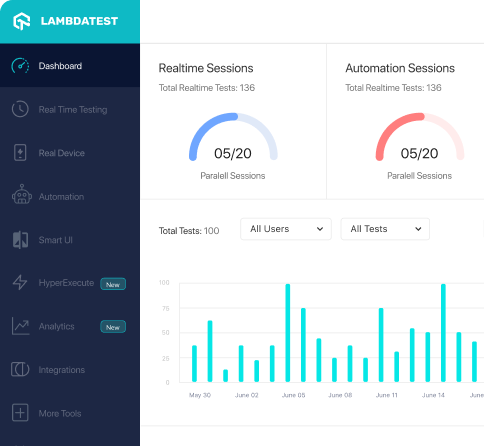How to use AtomicReferenceArrayAssert_usingComparator_Test class of org.assertj.core.api.atomic.referencearray package
Best Assertj code snippet using org.assertj.core.api.atomic.referencearray.AtomicReferenceArrayAssert_usingComparator_Test
Source:AtomicReferenceArrayAssert_usingComparator_Test.java
...19import org.assertj.core.api.AtomicReferenceArrayAssertBaseTest;20import org.assertj.core.internal.ObjectArrays;21import org.junit.Before;22import org.mockito.Mock;23public class AtomicReferenceArrayAssert_usingComparator_Test extends AtomicReferenceArrayAssertBaseTest {24 @Mock25 private Comparator<AtomicReferenceArray<Object>> comparator;26 private ObjectArrays arraysBefore;27 @Before28 public void before() {29 initMocks(this);30 arraysBefore = getArrays(assertions);31 }32 @Override33 protected AtomicReferenceArrayAssert<Object> invoke_api_method() {34 return assertions.usingComparator(comparator);35 }36 @Override37 protected void verify_internal_effects() {...AtomicReferenceArrayAssert_usingComparator_Test
Using AI Code Generation
1package org.assertj.core.api.atomic.referencearray;2import static org.assertj.core.api.Assertions.assertThat;3import static org.assertj.core.api.Assertions.assertThatExceptionOfType;4import static org.assertj.core.util.Arrays.array;5import static org.assertj.core.util.FailureMessages.actualIsNull;6import java.util.Comparator;7import org.assertj.core.api.AtomicReferenceArrayAssert;8import org.assertj.core.api.AtomicReferenceArrayAssertBaseTest;9import org.assertj.core.internal.Objects;10import org.assertj.core.internal.ObjectsBaseTest;11import org.assertj.core.util.ComparatorBasedComparisonStrategy;12import org.assertj.core.util.CaseInsensitiveStringComparator;13import org.junit.jupiter.api.Test;14class AtomicReferenceArrayAssert_usingComparator_Test extends AtomicReferenceArrayAssertBaseTest {15 private static final Comparator<String> CASE_INSENSITIVE_STRING_COMPARATOR = new CaseInsensitiveStringComparator();16 private Objects objectsBefore;17 public void initObjects() {18 super.initObjects();19 objectsBefore = getObjects(assertions);20 assertions.usingComparator(CASE_INSENSITIVE_STRING_COMPARATOR);21 }22 protected AtomicReferenceArrayAssert<String> invoke_api_method() {23 return assertions.usingComparator(CASE_INSENSITIVE_STRING_COMPARATOR);24 }25 protected void verify_internal_effects() {26 Objects objects = getObjects(assertions);27 assertThat(objects).isNotSameAs(objectsBefore);28 assertThat(objects.getComparisonStrategy()).isInstanceOf(ComparatorBasedComparisonStrategy.class);29 assertThat(((ComparatorBasedComparisonStrategy) objects.getComparisonStrategy()).getComparator()).isSameAs(CASE_INSENSITIVE_STRING_COMPARATOR);30 }31 void should_keep_existing_comparator() {32 objectsBefore = getObjects(assertions);33 assertions.usingComparator(CASE_INSENSITIVE_STRING_COMPARATOR);34 assertions.usingComparator(CASE_INSENSITIVE_STRING_COMPARATOR);35 Objects objects = getObjects(assertions);36 assertThat(objects).isSameAs(objectsBefore);37 assertThat(objects.getComparisonStrategy()).isInstanceOf(ComparatorBasedComparisonStrategy.class);38 assertThat(((ComparatorBasedComparisonStrategy) objects.getComparisonStrategy()).getComparator()).isSameAs(CASE_INSENSITIVE_STRING_COMPARATOR);39 }40 void should_throw_error_if_comparator_is_null() {41 assertThatExceptionOfType(NullPointerException.class).isThrownBy(() -> {42 assertions.usingComparator(null);43 }).withMessage("The given comparator should not beAtomicReferenceArrayAssert_usingComparator_Test
Using AI Code Generation
1public class AtomicReferenceArrayAssert_usingComparator_Test extends AtomicReferenceArrayAssertBaseTest {2 private Comparator<String> comparator = new Comparator<String>() {3 public int compare(String o1, String o2) {4 return o1.compareTo(o2);5 }6 };7 private Comparator<String> reversedComparator = new Comparator<String>() {8 public int compare(String o1, String o2) {9 return o2.compareTo(o1);10 }11 };12 private Comparator<String> caseInsensitiveComparator = new Comparator<String>() {13 public int compare(String o1, String o2) {14 return o1.toLowerCase().compareTo(o2.toLowerCase());15 }16 };17 protected AtomicReferenceArrayAssert<String> invoke_api_method() {18 return assertions.usingComparator(comparator);19 }20 protected void verify_internal_effects() {21 assertThat(getArrays(assertions)).usingElementComparator(comparator).containsExactly("Yoda", "Luke");22 }23 public static class With_Comparator_Test extends AtomicReferenceArrayAssert_usingComparator_Test {24 protected AtomicReferenceArrayAssert<String> invoke_api_method() {25 return assertions.usingComparator(reversedComparator);26 }27 protected void verify_internal_effects() {28 assertThat(getArrays(assertions)).usingElementComparator(reversedComparator).containsExactly("Luke", "Yoda");29 }30 }31 public static class With_Comparator_Test2 extends AtomicReferenceArrayAssert_usingComparator_Test {32 protected AtomicReferenceArrayAssert<String> invoke_api_method() {33 return assertions.usingComparator(caseInsensitiveComparator);34 }35 protected void verify_internal_effects() {36 assertThat(getArrays(assertions)).usingElementComparator(caseInsensitiveComparator).containsExactly("Luke",37 "Yoda");38 }39 }40}AtomicReferenceArrayAssert_usingComparator_Test
Using AI Code Generation
1package org.assertj.core.api.atomic.referencearray;2import org.assertj.core.api.AtomicReferenceArrayAssert;3import org.assertj.core.api.AtomicReferenceArrayAssertBaseTest;4import org.assertj.core.internal.Objects;5import org.assertj.core.util.CaseInsensitiveStringComparator;6import java.util.Comparator;7import static org.mockito.Mockito.verify;8public class AtomicReferenceArrayAssert_usingComparator_Test extends AtomicReferenceArrayAssertBaseTest {9 private Comparator<String> comparator = CaseInsensitiveStringComparator.instance;10 protected AtomicReferenceArrayAssert<Object> invoke_api_method() {11 return assertions.usingComparator(comparator);12 }13 protected void verify_internal_effects() {14 verify(objects).assertUsingComparator(getInfo(assertions), getActual(assertions), comparator);15 }16}17package org.assertj.core.api.atomic.referencearray;18import static org.mockito.Mockito.verify;19import java.util.Comparator;20import org.assertj.core.api.AtomicReferenceArrayAssert;21import org.assertj.core.api.AtomicReferenceArrayAssertBaseTest;22import org.assertj.core.internal.Objects;23import org.assertj.core.util.CaseInsensitiveStringComparator;24public class AtomicReferenceArrayAssert_usingElementComparator_Test extends AtomicReferenceArrayAssertBaseTest {25 private Comparator<String> comparator = CaseInsensitiveStringComparator.instance;26 protected AtomicReferenceArrayAssert<Object> invoke_api_method() {27 return assertions.usingElementComparator(comparator);28 }29 protected void verify_internal_effects() {30 verify(objects).assertUsingElementComparator(getInfo(assertions), getActual(assertions), comparator);31 }32}AtomicReferenceArrayAssert_usingComparator_Test
Using AI Code Generation
1package org.assertj.core.api;2import org.assertj.core.api.AtomicReferenceArrayAssert_usingComparator_Test;3import org.assertj.core.api.Assertions;4import java.util.concurrent.atomic.AtomicReferenceArray;5import java.lang.String;6import java.lang.Object;7import static org.assertj.core.api.Assertions.*;8import static org.mockito.Mockito.*;9import java.util.Comparator;10/** * Tests for <code>{@link Assertions#usingComparator(java.util.Comparator)}</code>. */11public class Assertions_usingComparator_Test {12 private Comparator<Object> comparator = mock(Comparator.class);13 @Before public void before() {14 reset(comparator);15 }16 @Test public void should_create_Assert() {17 AtomicReferenceArrayAssert<Object> assertions = Assertions.usingComparator(comparator).assertThat(new AtomicReferenceArray<Object>(new Object[0]));18 assertThat(assertions).isNotNull();19 }20 @Test public void should_allow_null_Comparator() {21 assertThat(Assertions.usingComparator(null)).isNotNull();22 }23 @Test public void should_honor_AssertJ_default_Comparator() {24 assertThat(Assertions.usingComparator().getComparator()).isSameAs(Assertions.getComparisonStrategy().getComparator());25 }26 @Test public void should_honor_specified_Comparator() {27 assertThat(Assertions.usingComparator(comparator).getComparator()).isSameAs(comparator);28 }29 @Test public void should_return_this() {30 AtomicReferenceArrayAssert_usingComparator_Test softly = new AtomicReferenceArrayAssert_usingComparator_Test();31 assertThat(Assertions.usingComparator(comparator)).isSameAs(Assertions.usingComparator(comparator));32 assertThat(Assertions.usingComparator()).isSameAs(Assertions.usingComparator());33 assertThat(Assertions.usingComparator(null)).isSameAs(Assertions.usingComparator(null));34 }35}36package org.assertj.core.api;37import org.assertj.core.api.AtomicReferenceArrayAssert_usingComparator_Test;38import org.assertj.core.api.Assertions;39import java.util.concurrent.atomic.AtomicReferenceArray;40import java.lang.String;41import java.lang.Object;42import static org.assertj.core.api.Assertions.*;43import static org.mockito.Mockito.*;44import java.util.Comparator;Automation Testing Tutorials
Learn to execute automation testing from scratch with LambdaTest Learning Hub. Right from setting up the prerequisites to run your first automation test, to following best practices and diving deeper into advanced test scenarios. LambdaTest Learning Hubs compile a list of step-by-step guides to help you be proficient with different test automation frameworks i.e. Selenium, Cypress, TestNG etc.
LambdaTest Learning Hubs:
- JUnit Tutorial
- TestNG Tutorial
- Webdriver Tutorial
- WebDriverIO Tutorial
- Protractor Tutorial
- Selenium 4 Tutorial
- Jenkins Tutorial
- NUnit Tutorial
- Jest Tutorial
- Playwright Tutorial
- Cypress Tutorial
- PyTest Tutorial
YouTube
You could also refer to video tutorials over LambdaTest YouTube channel to get step by step demonstration from industry experts.
Most used methods in AtomicReferenceArrayAssert_usingComparator_Test
Try LambdaTest Now !!
Get 100 minutes of automation test minutes FREE!!



